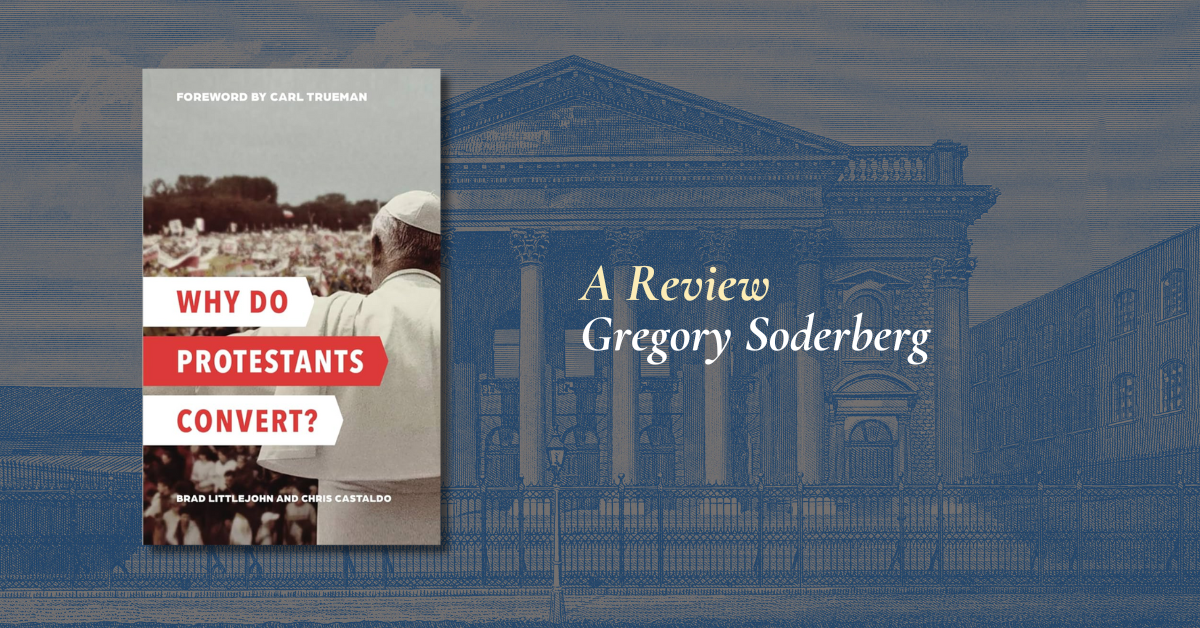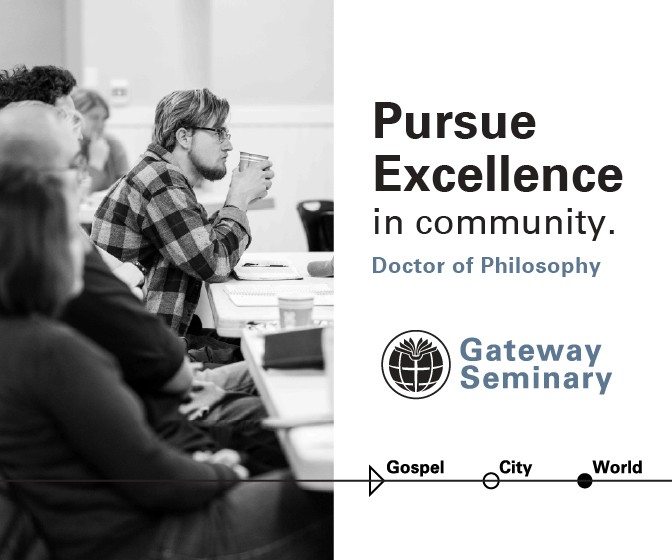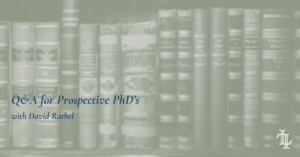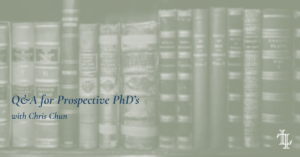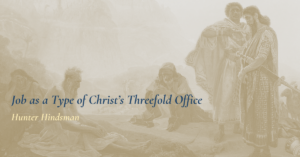Littlejohn, Brad and Chris Castaldo. Why Do Protestants Convert? Landrum, SC: The Davenant Press, 2023. 100 pages. Softcover. 978-1-949716-20-7. $12.95.
Introduction
The past thirty years have witnessed several high-profile Protestant conversions to the Roman Catholic Church: Thomas Howard, Richard John Neuhaus, Scott Hahn, and Francis J. Beckwith, among others. Among converts I know personally, the pattern goes something like this: someone grows up in a conservative evangelical church, they start to read or listen to John Piper and Tim Keller, so they become Reformed. Then they really start reading and discover that church history didn’t start with Martin Luther. After witnessing the continual infighting even among those who claim to be continuing the legacy of the Reformation, they want something more secure. They want a deeper connection to their Christian heritage. They want to worship God with more than praise songs and guitars. They admire the long legacy of Catholic opposition to abortion and realize that “social justice” came from Roman Catholic theologians. And so, they swim the Tiber and join the ranks of recent converts wearing rose-colored glasses. In my experience, many of those who convert to Catholicism or Eastern Orthodoxy rapidly progressed from one stage to another. This latest publication from The Davenant Institute helps to flesh out the reasons that drive many to convert to Catholicism.
The authors are eminently qualified to write such a book. Chris Castaldo is a former Roman Catholic, who is now the pastor of New Covenant Church, Naperville, a fellow at the Center for Pastor Theologians, and visiting Professor at the London School of Theology. He has authored and contributed to several books, including The Unfinished Reformation: What Unites and Divides Catholics and Protestants after 500 Years (co-written with Gregg Allison) and Talking with Catholics about the Gospel: A Guide for Evangelicals (Zondervan, 2015). Brad Littlejohn is the Founder and former President of the Davenant Institute and is now a Fellow of the Ethics and Public Policy Center. Littlejohn has a stream of publications that he has authored or contributed to, focusing on Richard Hooker, Reformation studies, and Christian ethics and political theology. In sum, there is an immense amount of learning and scholarship behind this slim book.
Summary
Castaldo and Littlejohn take the conversion of John Henry Newman (1801–1890) as a paradigm. They summarize his progression through various stages (from low church, non-sacramental, to high church Anglican, to entering the Roman Catholic church), which serves as a useful foil for other conversion accounts. They also focus on three main factors that lead to conversion: psychological, theological, and sociological. Within these three main categories, they delineate a total of nine different motivations that might lead one to convert to Roman Catholicism. While these can be differentiated, they cannot be fully separated. Any conversion is a combination of a host of factors, which all influence each other. This model is also useful because it highlights the fact that joining the Catholic church is not just about lining up theological propositions and determining which option comes out ahead. Psychological and sociological factors are also important. As the authors state: “We are not mere brains, but souls, and embodied souls at that. If Protestantism cannot sustain and satisfy the souls and bodies of its adherents, we can hardly complain when they look elsewhere” (12-13).
These concerns structure the book. Chapter 1 (“Conversionitis”) sketches the conversion of Newman and presents it as “structurally paradigmatic for contemporary converts to the Roman Catholic Church” (13). Within the threefold structure of psychology, theology, and sociology, two factors including the issues of sacramental mediation and the “binding authority of church tradition,” provide the “train tracks” on which most converts ride on their journey to Rome (13-14).
Chapter 2 focuses on the psychology of conversion, chapter 3 covers the theology of conversion, while chapter 4 explores the sociology of conversion. Chapter 5 (“A Way Forward”) presents the authors’ constructive proposals, and Littlejohn offers a more focused afterword, “Why Protestants Should Not Convert.”
Chapter 2 is worth surveying in more detail, because it highlights the overall approach that this book takes to the entire question of Protestants converting to Rome. Within this chapter the authors identify three “psychological needs” that seem to drive conversion to Roman Catholicism: “Authority Hunger, Holiness Deficit Disorder, and the Inner Ring” (17). The Catholic church offers real, visible, tangible authority in multiple ways, from a pope (from “papa”) to priests (“father”) to “Mother Church.” The Catholic church claims to have an unbroken succession of leadership that traces back to the Apostles; it appeals to authoritative written and unwritten “tradition.” To those dismayed by the fractious bickering of the thousands of Protestant denominations, the attraction is real. However, the authors counter with a Reformational critique: “The authority of the Roman Catholic Church, the Reformers argued, is a kind of false simulacrum of authority, a shortcut rather than the real thing, since it nullifies freedom rather than sustaining it; rather than guiding the soul in pursuit of the good, the hierarchy claims to itself possess the good, so that the laity can simply rest in obedience–learning doctrine if they are so inclined, but trusting implicitly if they prefer” (20).
They label the second psychological need “Holiness Deficit Disorder.” According to this interpretation, converts’ attraction to the rich liturgy, cathedrals, and a sense of the “holiness” of worship grows in the shallow soil of modern Protestant worship. Here, again, the authors present an alternative of classical Protestant worship, which was liturgical and did not focus on the Word at the expense of the sacraments.
The third psychological need is what C.S. Lewis termed the “Inner Ring.” Although there might be a sense in which Catholicism has an “inner ring” structure inherent within its hierarchy, and even within its cosmology (with layers of saints above us, and the Virgin Mary above all), the authors are identifying what is really a phenomenon of American culture in the past 30 years or so. Catholics simply have more established, and “sexier,” publications and institutions. Think of First Things, or of the Catholic judges on the Supreme Court. Evangelicals, or fundamentalists, just don’t command the same respect in our current culture. Becoming a Catholic is one way to be both Christian and conservative in public.
The authors conclude with a call to action: “American Protestantism needs to take a hard look in the mirror and ask itself why it has fallen so far from offering meaningful structures of authority, authentic experiences of holiness, and the kind of cultural leadership and intellectual sophistication that attracts the best and the brightest” (31-32).
This pattern of analysis characterizes this short book. After analyzing each factor in conversion, the authors then present a classical, Protestant alternative. The book’s main argument is that those who are attracted to Rome should pause and consider the riches of historically informed Reformed Protestantism, because much of what they are seeking in Catholicism can be found in Protestantism itself.
Each of the subsequent chapters is divided into three separate sections, which describe reasons for conversion to Rome. Chapter 4 (Theology of Conversion) discusses such themes as the convert’s quest for religious certainty, the desire for historical rootedness, and the solidity and dependability of what the authors call “tangible grace,” found in the sacraments. Chapter 5 (The Sociology of Conversion) highlights the issues of denominational division and lack of unity among Protestants, as well as the shallowness and irrelevance of much evangelical Protestant worship. Again, each of these motivations for conversion highlights potential shortcomings or one-sidedness in many Protestant churches.
Chapter 5 (A Way Forward) presents a positive vision for remaining Protestant, while also addressing the concerns of those who convert. Under the heading of “Identity” the authors treat the widespread problems of rootlessness, fatherlessness, and individualism. Rome can appear to offer a quick fix to these real, existential concerns. However, Castaldo and Littlejohn remind us: “The Reformation offered no simplistic solo Scriptura of religious individualism, but a rich and nuanced vision of how to orient ourselves in deference to both the authority of the Word and our authorities in the world, how to grow into the freedom of a Christian man or woman who is also the dutiful servant of all” (74-75). The authors expound on the antidote for Roman Catholic “conversionitis” in the section “Vision of Christ” in Chapter 5: historically-informed, Biblical, liturgical worship that draws us near to God the Father, who receives us as his children, without any reliance on merit. Additionally, we cannot forget that the Reformers strenuously taught the necessity of good works, which flow from a living faith.
The last section of Chapter 5 (“Vision of the Church’s Mission”) reminds readers about the Protestant doctrine of the “priesthood of believers,” which teaches us that we all have a part to play in the renewal of the church (85-86). But the Reformation also stressed the importance of an educated ministry. The Reformers were humanists in the sense that they appreciated and used all of the best available tools of human learning (86-87). The authors call for a renewal of the ancient practice of Christian catechesis–training every Christian in the full scope of the orthodox faith (88-89). It is vital to teach our people about the church’s history, to prevent the Protestant myopia that sets people up to slide quickly in Catholicism. As the authors state: “The Reformers were not launching a revolution, as if theological concepts such as faith and grace were strange additions to the church’s life. They were radicals in the true sense of the word, going back to the roots of the historic Christian faith as promulgated by the apostles and the greatest Church Fathers” (90).
In his Afterword (“Why Protestants Should Not Convert”) Littlejohn closes the book with a more forceful statement. He claims it is “spiritually dangerous” to convert to Rome because the “issues at stake in the Reformation were not trivial ones” (94). Additionally, the convert “is in danger of idolatry, of seeing in their new church the end of all their spiritual hopes and fears, the answer to all their questions” (95-96). Although this is probably the case in any conversion (whether to another Christian tradition, or to another religion, or to no religion), the stakes are higher because the Roman Catholic church claims to be the ultimate and exclusive guardian of the Truth. Many converts are seeking a firm foundation for their faith, but Littlejohn asks a barbed question: “But if sixty-six books of divinely-inspired text are susceptible to many different interpretations, why would adding six hundred and sixty-six divinely-inspired bulls, encyclicals, or canons solve the problem?” (96). The starry-eyed convert fleeing the disunity of Protestantism will be quickly disappointed by the lack of unity in the Roman Catholic church. The recent innovations of Pope Francis and the German bishops in the matter of blessing same-sex unions is just one example.
Littlejohn argues that most of what these converts want can be found in the historic, classical Protestant tradition: “The magisterial Protestant tradition, at its best, has been able to combine the doctrine of sola scriptura with a deep respect for the creeds and the Fathers, and the doctrine of sola fide with a forceful commitment to the spiritual disciplines and the cultivation of virtue” (99-100). The answer is not to convert to Rome–it’s to be faithful where God has placed you, working for reform and renewal, calling the church back to its roots, and creatively seeking further expressions of unity and lower-case catholicity whenever possible.
Evaluation
Throughout the book, the authors take seriously the criticisms of Protestantism brought by converts to Catholicism. This sets the book apart from other volumes on the topic, which tend to focus on the most objectionable (at least from a Protestant point of view) aspects of Catholic teaching and practice.
The authors are also charitable in trying to understand what drives conversions. They are concise in presenting alternatives to conversion. The key point of the book is this: “But the solution … is to dig deeper into the Reformation, not to run from it” (92).
Those who are seriously considering conversion will probably be disappointed at the lack of engagement with Roman Catholic distinctives, such as veneration of Mary and the saints, the Roman Catholic view of church tradition, and the power and authority of the pope. However, there are other books that treat those topics. Castaldo and Littlejohn do an excellent job of highlighting other aspects of the conversion process.
Conclusion
This book will be especially helpful for pastors, seminary teachers, and anyone interested in church history and theology. What often sets converts down the road to Rome is simply learning about church history. Because many churches and some denominational traditions have not taught church history well, potential converts are primed and ready to accept the claims of Rome once they realize the church didn’t disappear after the Apostles died.
This book is important reading, especially in light of the seismic changes occurring in our culture. In some ways, conservative Roman Catholics, Eastern Orthodox, and Protestant Christians have more in common with each other than with the increasingly secular culture. We should, as Francis Schaeffer urged us, be co-belligerents wherever we can. But we should not downplay our differences either. Jesus Christ prayed that his followers would be one (John 17). He died to create unity between Jew and Gentile (Eph. 2). However, true unity requires that we “speak the truth in love” (Eph. 4:15). This book is a commendable attempt to do just that.
Author
-

Dr. Gregory Soderberg teaches and mentors students of all ages at Kepler Education, the BibleMesh Institute, and Redemption Seminary. In addition to authoring chapters in two books, his study of communion frequency in the Reformed tradition was published by Vandenhoek & Ruprecht. He has written for Intellectual Takeout, SALVO, Common Good, and Touchstone, and posts regularly at The SoderBlurb.
View all posts
